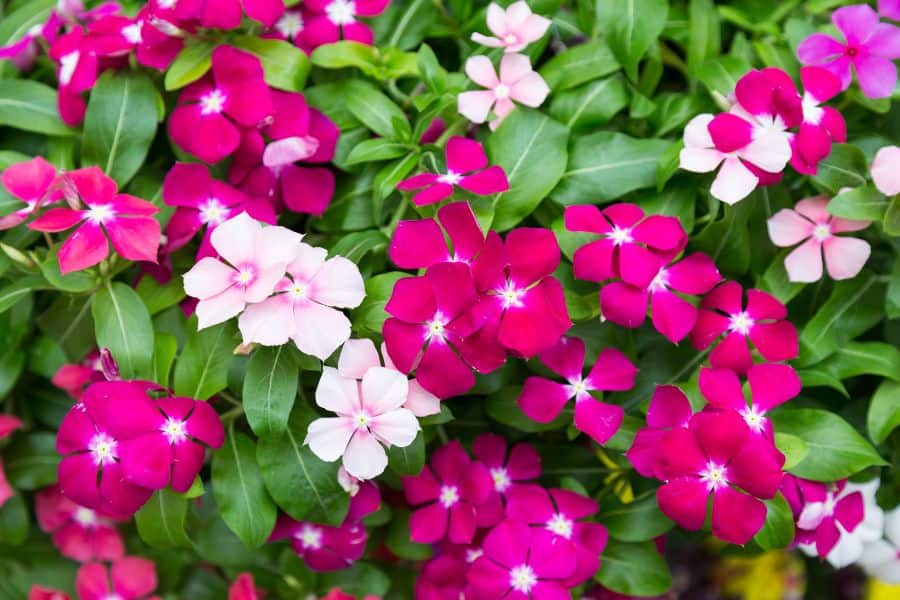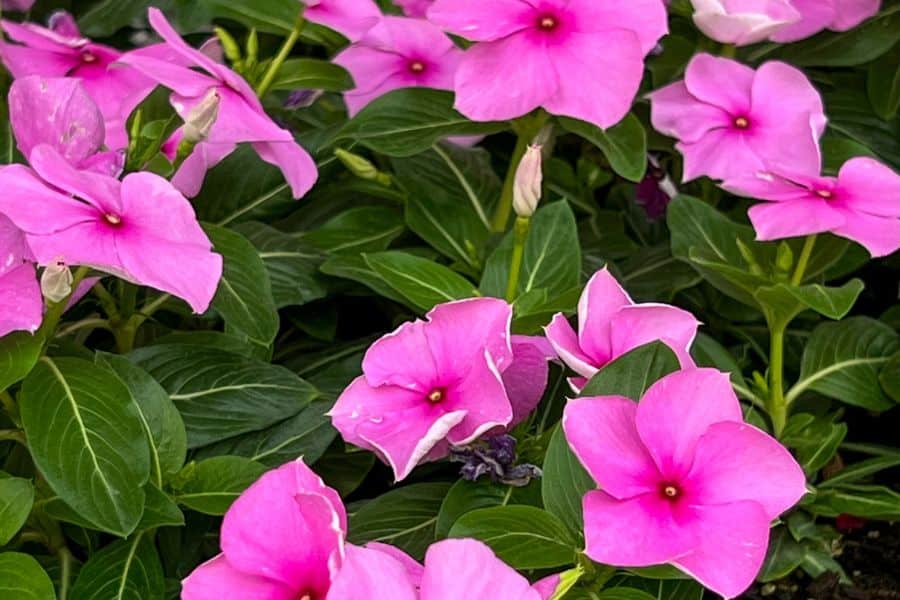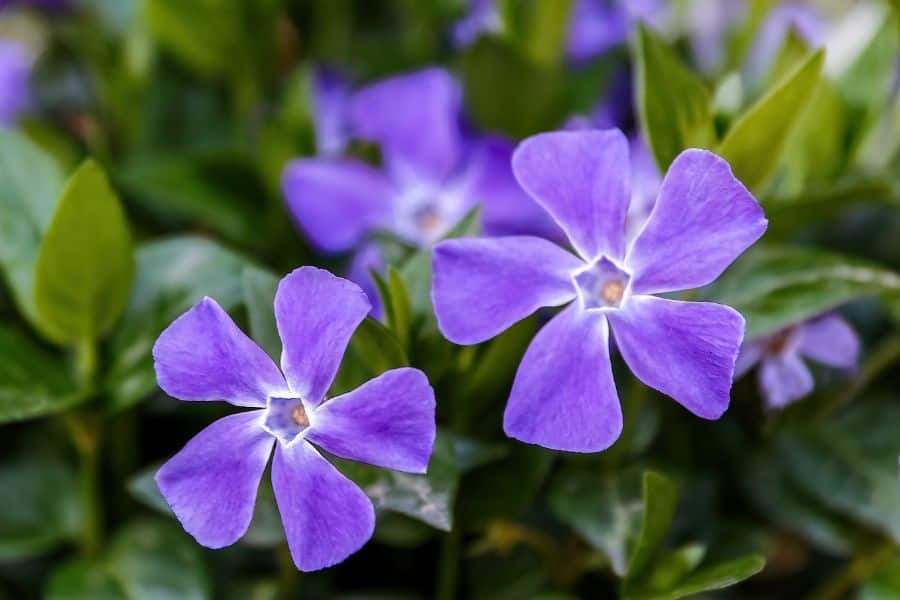Beloved for its glossy leaves and nonstop color, Vinca is a reliable garden favorite that brings life and vibrancy to sunny landscapes. Native to the Mediterranean region of Europe, it has adapted beautifully to gardens around the world, thriving in warm, sunny conditions. With both annual and perennial varieties, Vinca offers gardeners a reliable choice for vibrant groundcovers, borders, and containers that perform from spring through frost.
For clarity, perennial Vinca—commonly referred to as Periwinkle or Vinca Vine — is discussed separately. The annual varieties include Vinca minor and Vinca major. Annual Vinca, also known as flowering Vinca is available in both upright and trailing forms, producing abundant blooms throughout the Summer.

Our Selection of Vinca
At Martin Garden Center, we offer both annual vinca in 4″ containers, 3″ containers and flats. From Spring till the end of June, we try to keep 3 full tables of upright annual vinca in flats or 3″ containers. We also try to keep 3 full tables of annual trailing vinca which tends to only be available in 3″ or larger containers. Both 4″ and 6″ containers of upright and trailing Vinca are available in late spring and early summer. If we are lucky, we will have Vinca through late summer.
The types of upright Vinca varieties including the Pacifica series, the Cora Series and the Valiant series are commonly found from our vendors. Trailing Vinca varieties that we commonly see include the Cora Cascade series and the Mediterranean series. We also see the unique Soiree series (Catharanthus).
We are growing the following varieties of Annual Vinca in 2025:
- Vinca Cora Cascade Mix
- Catharanthus Soiree Double Pink
- Catharanthus Soiree Flamenco Salmon Glow
- Catharanthus Soiree Kawaii Blueberry Kiss
- Catharanthus Soiree Kawaii Red Shades
- Catharanthus Soiree Kawaii White Peppermint
Growing and Caring for Vinca
Vinca are relatively adaptable and can thrive in various environments. They prefer well-drained soil rich in organic matter but can tolerate various soil types. Vinca is known for its ability to thrive in sunny locations with extreme heat, making it a preferred choice for Southern gardens. Most upright and trailing Vinca varieties can be propagated through seeds. However, purchasing young plants from nurseries or is a more common method. Specialty varieties can only be purchased by cuttings.
Annual vinca is relatively easy to grow as it blooms prolifically and can withstand drought. It is not commonly burdened by insects, but it does have a susceptibility to fungal problems. Botrytis blight, Alternaria leaf spot and root and stem rot can kill these plants when these plants are subjected to damp or soggy conditions. Space plants accordingly, only water when dry, and avoid overhead watering.

Leaves and Flowers
Vincas are known for their glossy, dark green leaves. The leaves grow in pairs along the trailing stems, providing an attractive backdrop for the vibrant flowers that bloom throughout the growing season. The flowers are typically five-petaled and star-shaped, coming in almost all shades except yellow. They possess a delicate beauty and are often adorned with contrasting centers. Vincas bloom from spring to first frost, providing a stable source of color in your garden.
Uses in Gardening & Landscaping
Trailing Vinca is a popular choice for container gardening, hanging baskets, and as a ground cover. The trailing habit of the trailing Vinca varieties lends itself well to cascading over the edges of pots or spilling over walls, creating a picturesque display.
The upright Vinca varieties will grow to heights from 8-12 inches and thus can make a great thriller in containers and will also quickly spread to cover the ground as a landscape plant. Their neat, bushy habit makes them perfect for creating borders along pathways or garden beds. The vibrant flowers add a splash of color that enhances the overall appeal. For a dramatic effect, plant them en masse in garden beds. Their continuous blooming throughout the season ensures a bright, attractive display.

Frequently Asked Questions
Do Deer Eat Vinca?
Deer typically avoid eating Vinca, commonly known as periwinkle or Madagascar periwinkle. Vinca is deer-resistant due to the bitter taste and toxicity of its foliage. The plant contains alkaloids that can be harmful if ingested, and deer tend to avoid plants with such characteristics.
Is Vinca Poisonous To Dogs?
Yes, Vinca is considered toxic to humans and pets, including cats and dogs. Vinca contains alkaloids, specifically vinca alkaloids, which can be harmful if ingested. Ingestion of Vinca may lead to vomiting, diarrhea, abdominal pain, and other signs of gastrointestinal distress.
